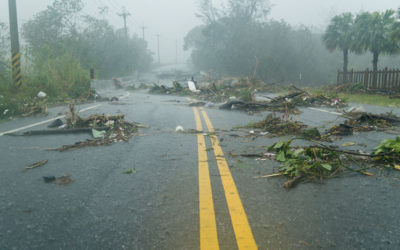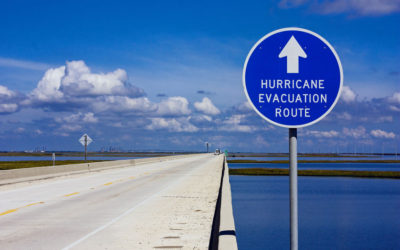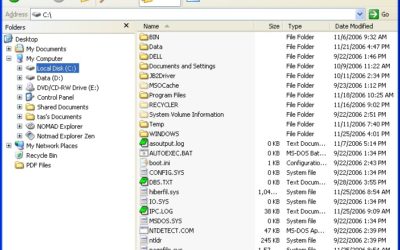It’s that time of year again, when the analysts analyze and publish the Gartner Magic Quadrant insight into products and solutions ahead of a calendar year budget cycle. This is for good reason, although Gartner recommends against buying solely based on what is farthest top and right, stating that niche and visionary products may be extremely well-suited for a company’s needs. Veeam Software is an unusual participant in the quadrant, given that they entered it in the visionary section, and were the first company to do so with only a virtualization offering, being “built for virtualization.” All the other companies had solutions to protect physical environments or were created to protect physical and then bootstrapped or developed into the virtual space.
One of the items that rings true to customers of all sizes is the ease of implementation and use of the products. Complex implementation and management/maintenance of products translates to more overhead and dollars (e.g., higher TCO, higher risk) and has remained a pain point for many products. Again, Veeam has remained the exception, with ease of implementation and use being a core consideration for customers. Implementation costs are lower, ongoing realized costs remain lower, yet satisfaction and the “wow, this actually works” factor remains high.
Since their first appearance on the Magic Quadrant, Veeam has continued to innovate and be thought and product leaders in the market. Veeam has been a “backup and replication” product since early on, while most products were simply labeled “backup and recovery.” I always found this a bit odd, because if you couldn’t recover a backup, then what good was it? The bigger “a-HA!” for Veeam came when customers learned they could actually recover entire virtual machines—successfully, mind you—within minutes. Gartner took notice.
Fast forward a few years, and cloud offerings for offsite data storage became the new buzzwords. Cloud capabilities became a new measure in the MQ. Why should companies spend the money on Disaster Recovery equipment and multiple locations when they could easily write data to the “cloud” and let the “cloud people” deal with it? The major “cloud” companies began clawing and scratching and innovating, but for many customers, it still comes down to a few items: cost, ease of use, and reliability (we’ll throw service and support in there as part of it.) Customers quickly realized the “cloud” can be a bit, well, cloudy. It is easy to have a “throw more storage at it” attitude, because that generates revenue. Many customers suffered with costs related to restoring data, and the help they received from the cloud provider, especially if the bandwidth or data limits had been met or exceeded according to contracts.
At Global Data Vault, we realize the pain points of something that should be easy and cheap, and maybe a little magical. We adopted the Veeam messages of “it just works” and “always on” and added our own: It’s always our problem. We make offsite data storage for both backed up and replicated virtual machines easy. By utilizing Veeam Software, one of Gartner’s leaders, we guarantee service and delivery our customers expect, all with simple and transparent billing and reporting. With lower overhead and lower TCO, Global Data Vault excels in satisfaction and providing a truly customer-centric cloud experience.
More Backup and Disaster Recovery Posts
Loss of power during Hurricane Isaac
As Hurricane Isaac continues its slow march inland, the city of New Orleans is largely without power this afternoon. This image shows the widespread power outages in the city. It’s seems eerie that today is the seventh anniversary, if you should call it that, of...
How to build a disaster recovery site – part 3
Whether you are outsourcing your Disaster Recovery program or keeping it in house, the steps required to implement it are critical. In this series, we’ve drafted an outline of how to build a remote Disaster Recovery site for your IT. In our previous articles, Choosing...
Building a Disaster Recovery Site – part 2
What does it take to build a remote Disaster Recovery site for your IT? (Part 2 of 3) Whether you are outsourcing your Disaster Recovery program or keeping it in house, the steps required to implement it are critical. In this series, we’ve drafted an outline of how to...
Choosing Disaster Recovery Site Location
Disaster Recovery is one thing you hope you never need, but if you do, you’ll be very happy if you have right plan in place. Whether you are outsourcing your Disaster Recovery solution or keeping it in house, the steps required to implement it are somewhat complex,...
Data Backup and Disaster Recovery: A Comparison
What’s the difference between Data Backup and Disaster Recovery and how do I know which I need? What it is Data backup is a method in which your computer and network files are replicated in such a way that you can reinstall them in the event of a data loss. Data...
Developing a Data Retention Policy: What to include in your data backup?
(The second in three part series on Developing an Effective Data Retention Policy. In our previous article, Developing an Effective Data Retention Policy, we outlined the history of and comparison of tape backup environments to disc backup environments. Understanding...
Data Backup: Developing an Effective Data Retention Policy
(The first in a three part series. Jump to Part Two: What do you HAVE to back up?) Archiving one’s data is a challenge for every business, whether the business is a billion dollar enterprise or a SOHO. Data loss can be devastating to the profitability of any...
Your Data – Making Sure It’s Protected
Computer hardware fails, and the result is often the loss of valuable data. At Global Data Vault, we have a front-row seat to this mayhem. To ensure your offsite backup solution provides recovery as you expect, you must make sure that all of your important data is...








0 Comments